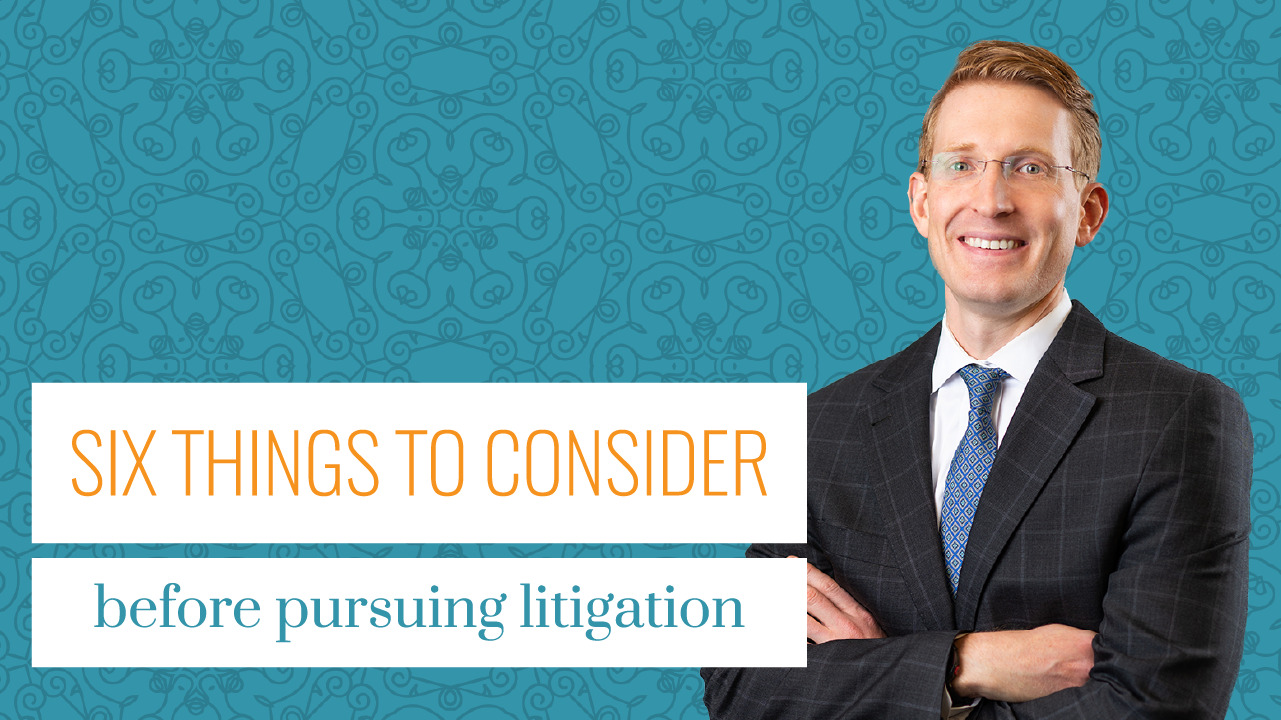Confidentiality agreements have become a ubiquitous feature of commercial litigation. This is due, in part, to the expansion of e-discovery and the exchange of ever-increasing numbers of documents. Pre-production review of the thousands or tens of thousands of emails involved in the average commercial case create significant challenges, both in terms of cost to the client and the tight discovery deadlines frequently imposed by courts. A confidentiality agreement, embodied in a stipulated order, can be a convenient way to expedite initial production of documents. It can reduce concerns about the risks of inadvertent disclosure of sensitive information potentially allowing pre-production review to proceed more quickly.
The frequent use of these agreements and their benefits can lead to complacency among counsel. Many agreements are lightly negotiated and quickly implemented early in the litigation without full consideration of their potential impact on the attorney-client relationship and the discovery process. They are worth a thoughtful approach.
The typical confidentiality agreement contemplates two tiers of confidential materials: those designated as “confidential,” and those designated as “highly confidential” or “attorneys’ eyes only.” A “confidential” designation generally requires a party, its attorneys, its experts and others to maintain the confidentiality of documents produced in discovery and use them only for purposes related to pursuing or defending claims in the litigation. An “attorneys’ eyes only” (“AEO”) designation contemplates a more sensitive level of information that can only be viewed by a party’s attorney and not by a party itself.
Designating a document as “confidential” does not generally impose a significant burden on the receiving party. A typical provision allows a party to view the document and share it with deponents, key witnesses, experts and insurance representatives without the producing party’s prior approval provided that recipients acknowledge the confidentiality order and/or sign a non-disclosure agreement. An AEO designation, however, is significantly more restrictive. Disclosure of such documents to clients, experts or others requires the prior consent of the counsel for the producing party. Unlike the “confidential” tier of documents, the designation of materials as AEO has the potential to interfere with the attorney-client relationship and increase costs resulting from skirmishes involving claims of “over-designation.”
Rule of Professional Conduct 1.4 recognizes that “[r]easonable communication between the lawyer and the client is necessary for the client effectively to participate in the representation” and requires attorneys to “explain a matter to the extent reasonably necessary to permit the client to make informed decisions.” Although the comments to the Rule allow an attorney to withhold information from a client to comply with a court order, both federal and state courts recognize that not being able to share source documents with a client in a complex case can detrimentally impact case preparation. For example, clients can often identify the relevance of a document that might otherwise seem extraneous to counsel; they can provide context to documents and email communications and they can provide valuable assistance in interpreting complicated data. Such insights may be unavailable when a document is labeled AEO.
In addition to hobbling a client’s ability to assist in case preparation, an AEO restriction can also undermine the attorney-client relationship. Many “hands-on” clients dislike the notion that counsel may have critical information about their case cannot be shared. Clients may apply subtle – or overt – pressure on counsel to provide that information to them. Such efforts pit counsel’s relationship with their client against their obligations pursuant to a court order.
The negative impact that an AEO designation can have on a receiving party also encourages disingenuous over-designation of documents. Some parties deliberately overuse AEO designations as a way to increase the cost of discovery and improperly obtain leverage over the other side. In Callsome Solutions Inc. v. Google Inc., Google provides a helpful roadmap of how NOT to approach confidential designation. 2018 N.Y. Misc. LEXIS 4852 (N.Y. Sup. Ct. Oct. 18, 2018). The parties in Callsome entered into a two-tiered confidentiality agreement that provided both “confidential” and “highly confidential—attorneys’ eyes only” designations for discovery materials. Google initially produced approximately 4,700 pages of documents in discovery, designating 78% of them as “confidential” and 5% as AEO. Google also designated most of the deposition transcripts of its witnesses as AEO, including some of its witnesses “I don’t know” answers. Counsel then engaged in a series of meet and confer conferences to address Google’s over-designation of documents. After each conference Google de-designated a small number of documents from AEO to confidential. Plaintiff ultimately filed a motion to compel to Google to de-designate a significant number of additional documents. In response, Google attempted to resolve the motion by offering to substantially revise its document designations and allow one of plaintiff’s principals to review all of the remaining AEO materials. Specifically, Google proposed to further reduce the number of AEO documents. Plaintiff rejected this offer but Google nevertheless de-designated the AEO materials. The court granted plaintiff’s motion and sanctioned Google’s counsel for improper designation of documents. In sanctioning Google, the court noted that “AEO designations should be made as sparingly as possible since they have severe consequences affecting the adversaries investigating, attorney-client communications, the search for the truth, and the judicial system which is inevitably drawn into the discovery process.” The court emphasized that a party has an obligation to make designations in good faith and chastised Google’s initially overbroad blanket designations:
Google characterizes its de-designation of almost all of its previously designated AEO documents…as good faith cooperation. The court sees it as a strategy to maliciously injure [Plaintiff]. Google’s wholesale de-designation confirms that Google’s initial designations were not made in good faith… Google’s actions appear to be an effort to thwart judicial scrutiny of its designations. A slow trickle of corrections does not rectify initial improper designations.
The court’s evaluation of Google’s efforts to resolve plaintiff’s pending discovery motion are particularly sharp:
Google’s … “offer to compromise” [the discovery motion] was nothing of the sort. … AEO designations are not negotiable. Discovery is either “extremely sensitive” technical data or commercially sensitive or strategic plans, or research and development or not. Either documents are truly secret and their disclosure will be harmful to the owner of the document or not. If not, then the discovery may be protected by a designation of confidential and the discovery remains unavailable to the public but usable by the parties for the purposes of the litigation only. A party cannot over designate documents then hold improperly designated documents hostage until the adversary surrenders.
A number of federal district courts have taken a similarly dim view of over designation.
Many practitioners also recognize the issue. The New York City Bar Association promulgates a form confidentiality order for use in cases filed in the Supreme Court’s Commercial Division. The committee developing the form order specifically considered whether to include an AEO provision and ultimately decided not to include it “primarily out of a concern that it would be invoked far more than necessary. Inevitable disputes over the propriety of a party’s invoking ‘Attorneys’ Eyes Only’ protection would undercut the overall goal of the Committee to reduce the time required to negotiate confidentiality agreements.”
Confidentiality agreements and the burdens they impose will undoubtedly remain a part of commercial litigation but thoughtful consideration early in the litigation can ameliorate some of the logistical and practical challenges associated with them. Counsel should carefully consider whether the two-tier structure that contemplates an AEO designation is appropriate. The “default” should be a single “confidential” classification that allows the free exchange of documents between attorneys and their client.










